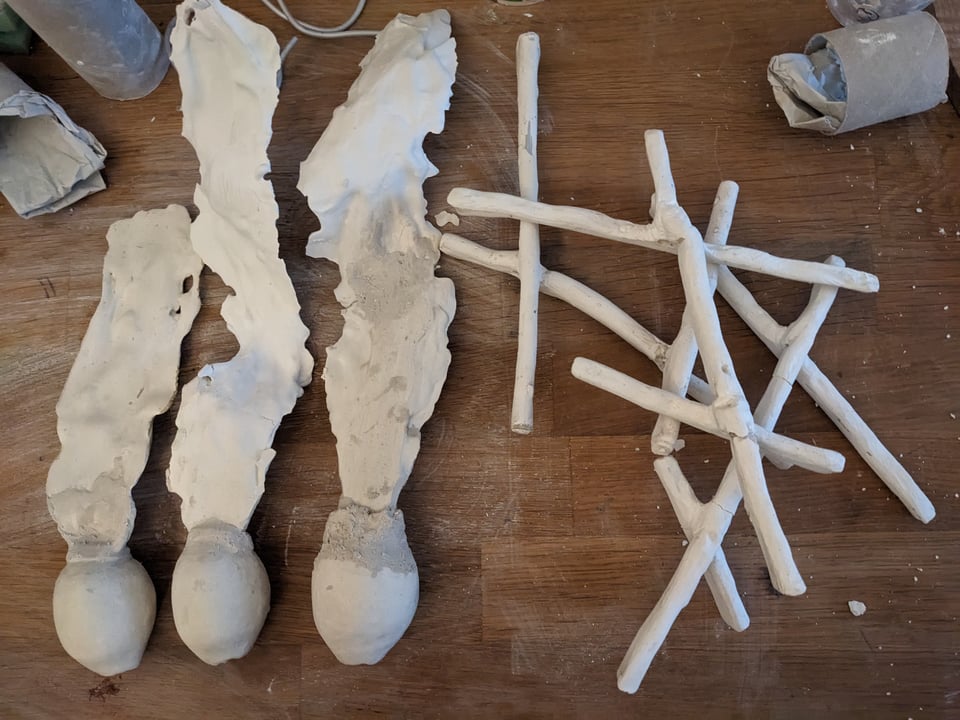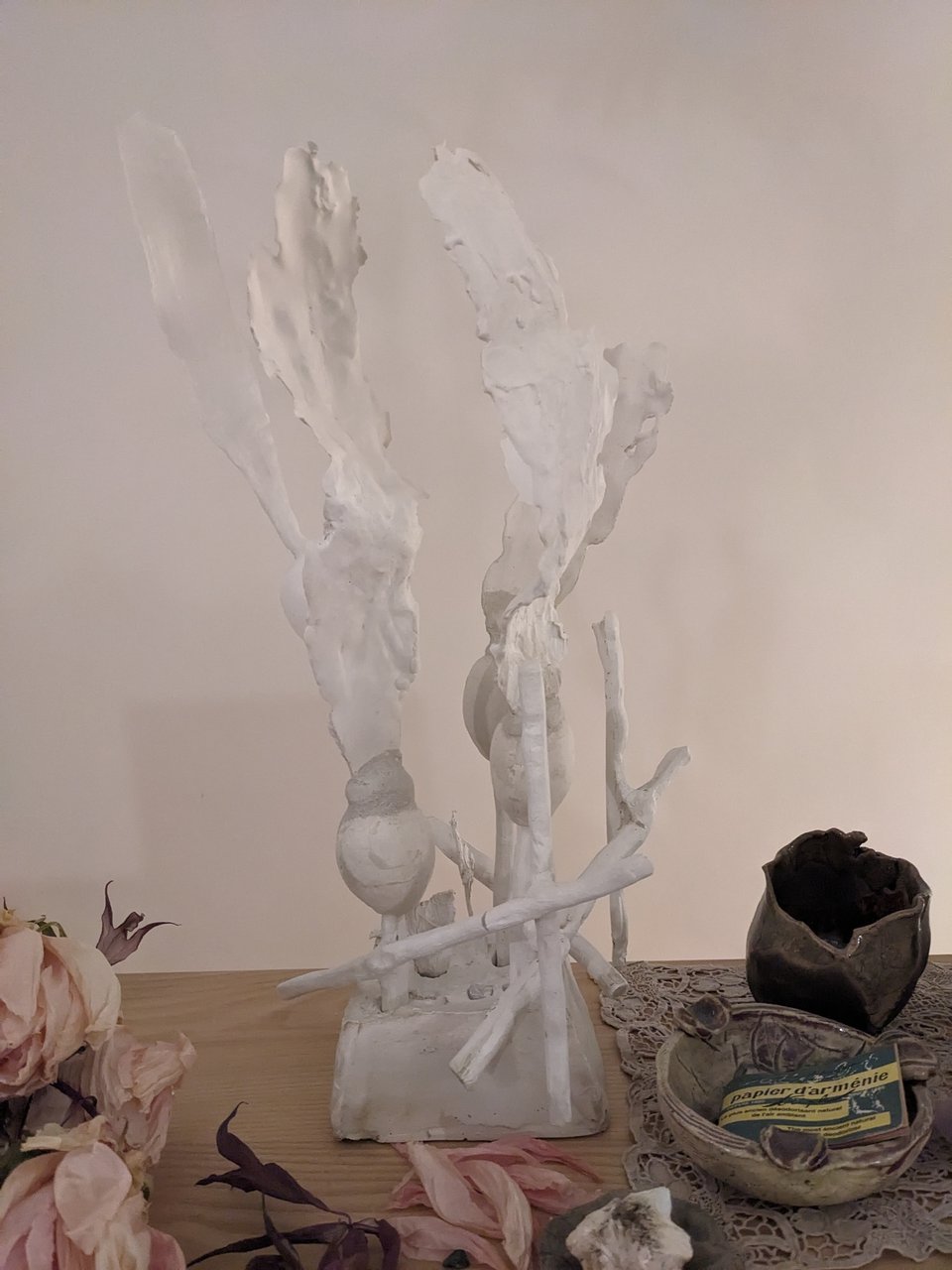Kelp me, I'm falling
Author’s note: Happy new year! … and apologies, a combination of colds and a school essay kept me from finishing this in a timely manner. Yep, I have to write school essays again! At least I’m done till next autumn.
In the end, my final project wasn’t a huge departure from the other sculptures covered in the previous newsletter - I decided to make a kelp-inspired sculpture, this time in plaster. The concept was, to take a horizontal slice of a tangle of kelp stems. Stems extend from the base to an invisible ceiling maybe 25 cm high, while the blades are free to extend as far as they need to go.
The other tempting direction was to go down the route of a frankenplant inspired by the kelp and spore bodies of slime molds and mosses. It somehow felt too contrived? I also thought about making an assembly, inspired by Christiane Löhr, my selected inspirational artist. Löhr makes geometric assemblies out of a single type of plant part. I decided not to go down this route, because part of the appeal of her work is the creation of order and geometry from organic material, and the tension within that. Order and geometry on its own, in the end, was not an aesthetic I was going for.
My chosen design meant the assembly of stems needed to be free-standing, and to be able to bear the weight. I opted to make three three-stick assemblies, that couldn’t stand on their own, but if glued together, might do so.

The stem assemblies were molded in clay, strengthened with metal armature wire, and scraped to form. The air bladders were made from the pear alginate molds mentioned in the previous newsletter. The blades were formed from string and plaster dribbled on an undulating plastic landscape. To assemble the blades with the bladders was a feat of plaster engineering. First, the string was not a sturdy armature material - the blades cracked under their own weight, and had to be shortened. Also, I discovered that perfectly creamy fresh plaster will almost instantly solidify when in contact with existing plaster, so these two were jammed together with additional plaster at the joint. I then scraped the joint to form, also using water to aid in this process.
The day we were to present our sculptures in class, I finally tested the assembly of the full sculpture. The sculpture needed to stay in parts, because it had to survive a cycle ride to school. To my horror, when these bladders with blades were set atop the stems, the torque from the weight was enough to twist and potentially destroy the stem assemblies. With no time to create something new, since plaster needs to cure for at least a day to get to some strength, I needed a quick fix. And so, the solid plaster base from the failed wax kelp sculpture came to the rescue. I drilled holes into the base so that the stems could be inserted. Stems inserted into the base also held a bladder, so there was no torque twisting the stem assemblies. Thankfully the armature wire I used to strengthen the stems was strong. You’ll see a beauty shot of the final sculpture below.

I’m happy with this. It still stands in my living room. It’s not what I meant to happen, but I’m just happy I was able to make it work. Long live the engineer inside me.